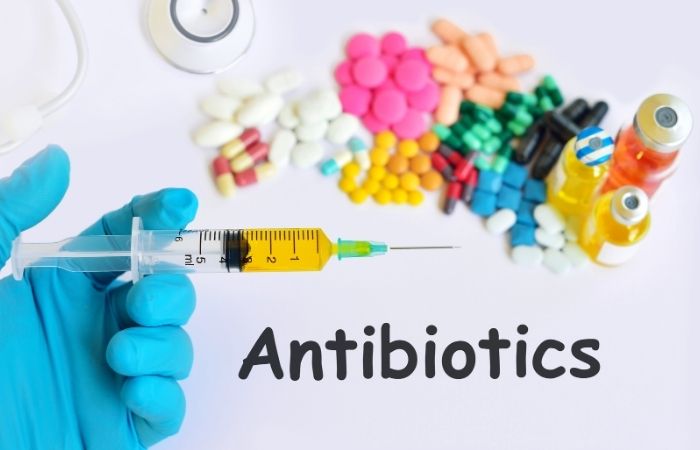How Accurate Are Chlamydia At Home Tests?
Quick Answer: Chlamydia and gonorrhea often look the same on the surface, but they require different antibiotics and can cause serious complications if left untreated. Testing for both, even if you have no symptoms, is essential for accurate treatment and preventing long-term damage.
This Isn’t Just a Burning Sensation, Here’s Why It’s Tricky
Imagine waking up after a casual hookup and noticing something off. Maybe there’s a cloudy discharge. Maybe you pee and it burns a little. Maybe your throat feels sore, but you think it’s allergies. Now open Google and type: “STD burning but no discharge.” What you’ll get is a blur of overlapping symptoms, medical jargon, and a lot of fear.
Both chlamydia and gonorrhea infect the same body sites, urethra, cervix, rectum, throat, eyes. They’re both spread by oral, vaginal, and anal sex. And most importantly? Both can be present without symptoms at all. According to the CDC, up to 70% of chlamydia infections and nearly 50% of gonorrhea cases in women are silent.
The classic signs, burning urination, unusual discharge, pelvic pain, might never show up. And if they do, you’ll never know which infection is causing what unless you test for both. That’s why combo testing is the gold standard. But not everyone knows that. Not even all clinics run both tests by default.

People are also reading: We Both Tested Positive, Now What?
How These Infections Act in Real Life (And in Your Body)
Let’s walk through what happens when each of these STDs gets into your system. Think of chlamydia as the slow burner. It can sit in the background for weeks, quietly inflaming your reproductive tract. Left untreated, it can move upward, causing pelvic inflammatory disease (PID) in women or epididymitis in men. These conditions can lead to scarring, infertility, and chronic pain.
Gonorrhea, on the other hand, tends to move fast. It can produce symptoms sooner and more severely, but not always. It’s also more likely to spread systemically if left untreated, especially in women. Cases of disseminated gonococcal infection (DGI), where the bacteria enter the bloodstream, can cause joint pain, skin rashes, even heart valve damage.
That’s not fear-mongering. It’s data. These bacteria behave differently. But they also like to travel together. Studies show that up to 40% of gonorrhea cases co-occur with chlamydia. That means if you test positive for one, there's a real chance you have the other, and you’ll need dual treatment.
Compare the Infections: Symptoms, Sites, and Speed
Here’s where things get messy for symptom checkers. Both chlamydia and gonorrhea can present exactly the same, or not at all. Let’s break that down side-by-side:
Table 1. Symptom and timeline comparison between chlamydia and gonorrhea. Note: these symptoms vary by site, sex, and immunity, and may be absent entirely.
“But I Don’t Have Symptoms”, Why That Doesn’t Matter
Jasmin, 23, didn’t feel sick. She went to a campus health fair offering free testing, mostly to support her roommate. Her chlamydia result came back positive. She’d had no pain, no discharge, no clue. Her partner, when tested, had gonorrhea, and symptoms that began only after she mentioned her result.
Both infections are experts at hiding. And because they're often silent, they spread more easily. People assume they’re fine and unknowingly pass the infection to new partners, or reinfect each other in cycles. This is why regular screening matters, especially if you're under 25, have new partners, or don’t use condoms consistently.
You can’t look at your genitals and see these infections. You can’t feel your cervix scarring. And you definitely can’t rely on someone “looking clean” or being monogamous as protection. The only way to know is to test, and the best way to stay healthy is to treat early, together.
Not All Tests Are Created Equal
One of the biggest myths floating around is that if you get tested for “STDs,” you’re covered. But not every panel automatically includes chlamydia and gonorrhea. And even when they do, how the sample is taken, and where, matters more than most people realize.
Let’s break it down. The gold standard for both infections is a type of molecular test called NAAT (Nucleic Acid Amplification Test). It can detect even tiny amounts of DNA from the bacteria. Most NAATs are run on urine samples for men and vaginal swabs for women, but they can also be done using throat or rectal swabs depending on exposure.
But here’s the kicker: if you’ve had oral or anal sex and only get tested with a urine sample, the infection might not show up, even if you’re positive. That’s why site-specific testing matters. You have to tell the provider (or check the right box on a home kit) about the types of sex you’ve had. No judgment. Just accuracy.
Why Testing at Home Is Now Just as Accurate
There’s a lingering belief that at-home testing is sketchy. But modern test kits use the same lab technology as clinics. Many FDA-cleared options include collection swabs for multiple sites and ship results within a few days. And because you do it in private, you might actually collect better samples, no rush, no cold exam room.
Let’s compare your options side-by-side:
Table 2. Testing comparison for chlamydia and gonorrhea. Accuracy depends on sample site, collection quality, and timing since exposure.
If your exposure was recent (under a week ago), some tests may miss the infection. That’s due to the incubation period, the time between infection and when the bacteria can be detected. That’s why retesting is sometimes necessary, especially if symptoms start or your partner tests positive later.
The Scariest Thing Isn’t the STD, It’s the Silence
Danielle, 30, was married. Faithful. Her last test had been years ago. When she got a pap smear, her OB/GYN asked if she wanted to add an STI panel. She shrugged and said sure. The result? Positive for gonorrhea. Her partner denied cheating. He tested. He had chlamydia. The silence between them after that was deafening.
What followed was months of therapy, treatment, and tearful conversations. But it also led to a realization: neither of them had tested in years. Neither knew where the infections came from. And if not for that pap smear, they might never have known at all.
This is what makes STDs dangerous, not the bacteria themselves, but the way stigma keeps people from testing, talking, and healing. You don’t need to be promiscuous. You don’t need to be irresponsible. You just need to be human, and open to care.
Antibiotic Resistance: Why You Can’t Guess and Treat
One of the most dangerous trends in STD care right now is self-medicating, or using leftover antibiotics from a friend. It might feel smart, especially if you “know what this is,” but it's not just risky, it’s fueling a crisis.
Gonorrhea has been declared a “superbug” by the WHO. Some strains are resistant to nearly every class of antibiotics we have. The current CDC protocol recommends a powerful injection of ceftriaxone paired with an oral antibiotic in some cases. Meanwhile, chlamydia is still treatable with doxycycline or azithromycin, but only if the dosage is correct and the infection hasn’t spread.
Misusing antibiotics not only fails to treat your infection, it makes future treatment harder. That’s why accurate testing matters. So does medical follow-up. Even if you use an at-home kit, results should be discussed with a provider or pharmacist.

People are also reading: How to Tell a Hookup You Had an STD After the Fact
Real Exposure, Real Decisions: What Happens After the Hookup?
Leo, 27, had a one-night stand during a work trip. They used a condom for vaginal sex, but not for oral. Two weeks later, he had no symptoms, but a routine test came back positive for chlamydia. His partner? Negative. Confused, he asked: “Could I have had this for months?”
Yes. And that’s not unusual. Chlamydia can linger for weeks or even months without causing obvious symptoms. Condoms reduce risk, but don’t eliminate it, especially during oral sex, where gonorrhea thrives. A sore throat or no symptoms at all doesn’t mean you're clear.
In many cases, STDs show up long after the exposure you think caused them. That's why testing isn’t just about what happened last week, it’s about your entire recent sexual history. And that’s also why retesting matters, especially after treatment or if you’ve had new partners.
Retesting After Treatment: Why One Test Isn’t Enough
Let’s say you get treated. You follow instructions. You take the meds. You feel fine. You assume it’s done. But here’s where many people slip: reinfection is incredibly common, especially when partners aren’t treated together or someone starts having sex again too soon.
According to CDC guidance, retesting is recommended about 3 months after treatment for both chlamydia and gonorrhea. Why? Because studies show reinfection rates of up to 20% in some populations. That’s not failure. That’s real life, where partners delay treatment, don’t disclose, or think one dose fixed everything.
If you were diagnosed during pregnancy, retesting is even more critical. Untreated infections can lead to preterm labor, eye infections in newborns, and other complications. And if you had either STD in the throat or rectum? Those sites need to be retested too, not just urine or vaginal swabs.
Table 3. Retesting timelines by body site. Follow-up matters, even if you feel better.
Prevention Without Perfection
This isn’t about never getting an STD. It’s about knowing how to protect yourself in ways that work for you. That means being honest about your sex life, not with us, but with yourself. Who are your partners? What kind of sex are you having? How often are you testing?
Here’s what prevention looks like in the real world:
Cam, 19, uses condoms every time for penetrative sex, but didn’t realize oral sex could transmit gonorrhea. Maria, 35, is in an open marriage and gets tested quarterly. Jay, 28, didn’t use protection during a vacation fling, but tested five days later and again at day 20 to catch the window. All of them made choices. All of them took steps. That’s what care looks like.
Testing doesn’t mean you’re dirty. Talking about protection doesn’t make you paranoid. It makes you real, and it makes you ready. Whether you’re on PrEP, using condoms inconsistently, or in a situationship, the best plan is to build testing into your routine. That could mean:
- Testing every 3 to 6 months if you're sexually active with new or multiple partners.
- Testing before and after a new relationship starts.
- Retesting after any known exposure or if a partner discloses a positive result.
If you don’t want to deal with a clinic? That’s fine. Order a discreet combo STD test. Do it at home, no judgment, no waiting room. Peace of mind doesn’t require permission.
What Treatment Really Feels Like (And What to Expect)
Treatment isn’t a horror story. For most people, it’s a few pills, or a single injection, and a week of waiting before having sex again. For chlamydia, the standard is a 7-day course of doxycycline. For gonorrhea, it’s usually a shot of ceftriaxone in the glute plus oral doxycycline if chlamydia hasn’t been ruled out.
No, it doesn’t hurt (aside from the shot, maybe). No, it doesn’t affect your fertility immediately. And yes, your body can recover, fast. What’s harder sometimes is the emotional side. Shame. Guilt. Worry about who gave it to you or whether they knew. That’s valid. But it doesn’t mean you’re dirty or broken.
People with STDs date, fall in love, have amazing sex, and build families. You can, too. Treatment is just the start of a new chapter, not the end of anything.
If you're unsure where to start or whether your symptoms mean anything, don't spiral. STD Test Kits can help you figure it out from home, with quick, private results and combo panels that check for both chlamydia and gonorrhea. No clinic, no judgment, just facts.
FAQs
1. Can I really have both chlamydia and gonorrhea at the same time?
Yep. And it happens more often than you’d think. These two infections love to tag-team. If you’ve tested positive for one, your provider will likely treat you for both, especially if you're waiting on full results or got exposed through the same partner.
2. Does discharge always mean an STD?
Not always. Sometimes it’s just your body doing its thing, especially if you’re ovulating or had a wild weekend. But if it smells off, changes color, gets thicker, or comes with burning or itching? Get tested. Better to know than spiral on WebMD.
3. Can oral sex really spread these?
Yes, yes, yes. We need to retire the myth that oral is “safe.” Gonorrhea especially thrives in the throat, and you might never feel a thing. If you’ve given or received oral, ask for a throat swab. Most people forget this, and that’s how it keeps spreading.
4. What happens if I just ignore it?
You might feel fine for a while. But eventually? It can mess with your fertility, trigger chronic pelvic pain, or even infect your joints or bloodstream. No dramatic music, just real consequences. And you won’t get a warning text from your body first.
5. Which one’s worse, chlamydia or gonorrhea?
Honestly? They're both annoying in different ways. Gonorrhea acts faster and can cause more dramatic symptoms. Chlamydia is sneakier, and can do quiet damage over time. Either way, untreated = not great. Caught early = handled fast.
6. How long should I wait before getting tested after a hookup?
If you’re stressing over a recent encounter, wait at least 7 days before testing for chlamydia or gonorrhea, that’s when they start showing up reliably. But if you have symptoms sooner, test sooner. And if negative but still worried? Retest at day 14–21 to be sure.
7. Will antibiotics cure it completely?
Yes, as long as you take the full dose and don’t try to DIY your meds. We’ve entered the era of antibiotic-resistant gonorrhea, so don’t skip your follow-up. And don’t share pills with your partner like it’s a painkiller. This isn’t that.
8. Do condoms actually work for these?
They absolutely help, especially for penetrative sex. But they don’t protect much during oral or skin-to-skin contact. They’re a seatbelt, not a force field. Combine them with regular testing and honest convos, and you’re doing great.
9. Do I have to tell my partner if I test positive?
Look, you don’t *have* to do anything. But should you? Yeah. You’d want to know, right? If the convo feels impossible, there are anonymous text services and apps that help notify them without drama. It’s not about blame, it’s about care.
10. What’s the best way to test for both at home?
Get a combo test kit that checks for chlamydia and gonorrhea from one sample, urine, vaginal, or rectal depending on how you’ve had sex. Look for NAAT-based kits for the best accuracy. This one here does exactly that, discreetly shipped, no awkward pharmacy runs.
You Deserve Answers, Not Assumptions
It’s okay not to know what’s happening in your body. It’s okay to be scared. What matters is what you do next. Whether you're dealing with an exposure scare, odd symptoms, or just doing the right thing, testing gives you power. Treatment gives you clarity. And talking about it breaks the cycle of silence.
How We Sourced This Article: We combined current guidance from leading medical organizations with peer-reviewed research and lived-experience reporting to make this guide practical, compassionate, and accurate. In total, around fifteen references informed the writing; below, we’ve highlighted some of the most relevant and reader-friendly sources.
Sources
1. Planned Parenthood: Get Tested
2. CDC Chlamydia Treatment Guidelines
3. Chlamydia vs. Gonorrhea: What’s the Difference? | Healthline
4. Chlamydia and Gonorrhea: Similarities and Differences | Medical News Today
5. How to Differentiate Chlamydia and Gonorrhea | Verywell Health
About the Author
Dr. F. David, MD is a board-certified infectious disease specialist who works to stop, diagnose, and treat STIs. He combines clinical accuracy with a straightforward, sex-positive attitude and wants to make his work available to more people, both in cities and in rural areas.
Reviewed by: Jane Toren, NP | Last medically reviewed: November 2025







